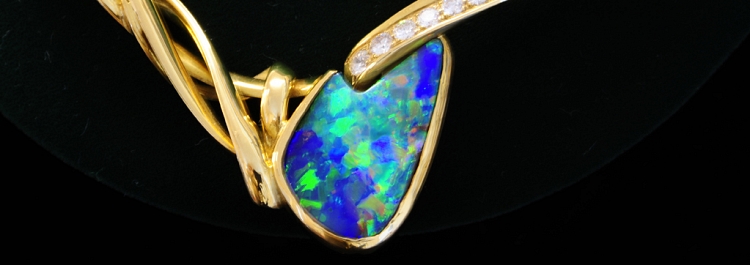Australian opal produces some remarkable geological specimens. This is largely due to the unusual set of geological circumstances during the sedimentary formation of opal. Opal specimens have been found that take the shape of other minerals including calcite glendonites after ikaite. These are known as “Pineapples”. Opal Enhydrite specimens have ancient water encapsulated within them, while opals from all fields have been found to contain microbes. Occasionally, opals known as picture stones portray images, shapes or landscapes.
Extraordinary collector items also include an opalised fossil of hypsilophodontid femur which has tooth-like structures embedded in the bone suggesting an attack from which the animal survived – as the bone has grown around the injury.
Opal and the Dinosaurs
Opalised remains from the “Age of the Dinosaurs” have been important in understanding past environments and the evolution of the strange creatures that still exist in Australia today.
Many opalised fossils are highly significant to international science. The molecule-by-molecule replacement of the bone by opal often preserves the fine details of the internal anatomy.
Many opalised examples of opalised fossil remains of dinosaurs, marine reptiles, fish, mammals, and invertebrates have been found, providing a fascinating insight into Australia’s prehistoric past.
Extraordinary collector items also include an opalised fossil of hypsilophodontid femur which has tooth-like structures embedded in the bone suggesting an attack from which the animal survived – as the bone has grown around the injury.
When “Nessie”, a three-metre opalised pliosaur, was discovered there was also evidence of its last supper, opalised fish vertebrae and a belemnite cone (a squid-like animal) were found together with gastroliths (stomach stones).





